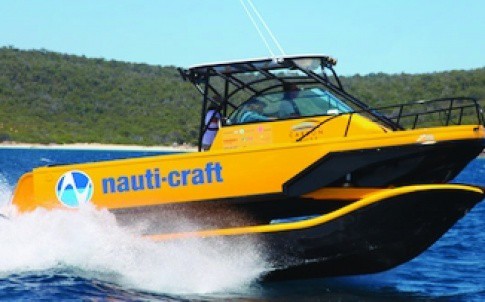Designed to reduce slamming and roll and pitch motions, Nauti-Craft’s hydraulic suspension system for multi-hulled vessels separates hulls from the superstructure, allowing the hulls to react rapidly to waves and conform to the ocean surface without transmitting high forces and accelerations of the hulls to the deck and superstructure.
The Australian company says this provides increased levels of ride comfort, control and stability whether stationary or travelling at speed. The improvements to stability and maintaining a level attitude can be further enhanced with active control of the suspension system and applications are anticipated in commercial, military and recreational arenas.





Project to investigate hybrid approach to titanium manufacturing
What is this a hybrid of? Superplastic forming tends to be performed slowly as otherwise the behaviour is the hot creep that typifies hot...